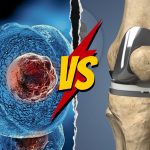- Home
- About Us
- Book Appointment
- Treatments
- Alzheimer’s Disease
- Anti-Aging
- Autism
- Autoimmune Disorders
- Back Pain
- COPD
- Crohns Disease And Ulcerative Colitis
- Erectile dysfunction and Penis enlargement
- Fibromyalgia
- Hip Pain
- Knee Pain
- Lupus
- Lyme Disease
- Multiple Sclerosis
- Muscular dystrophy
- Parkinsons Disease
- Peripheral And Diabetic Neuropathy
- Post Cancer Treatments
- Post Stroke Recovery
- Psoriasis
- Rheumatoid Arthritis
- Shoulder Pain
- Join The Club
- Aesthetics
- Blog
- Contact Us
A stem cell or bone marrow transplant (BMT) is an established medical procedure for treating life-threatening blood diseases. It is a cellular therapy that replaces damaged blood cells with healthy blood-forming cells in the bone marrow. A patient needs a BMT if the bone marrow stops functioning or doesn’t release enough blood cells due to a disease.
The latest advances in stem cell research and bone marrow transplants have renewed hopes in patients with blood cancer and other non-cancerous blood diseases that affect the bone marrow.
Read further to gain an in-depth understanding of stem cell or bone marrow transplants and how they revolutionize the treatment of blood diseases.
Table of Contents
What is Bone Marrow?
Bone marrow is the soft, spongy tissue that fills the bones’ medullary cavities (hollow centers). It is commonly called the “Blood cell factory” because it releases healthy hematopoietic stem cells into the bloodstream when required.
Hematopoietic stem cells are immature cells that divide and replicate themselves to produce red blood cells, white blood cells, and platelets. The human body requires these three types of blood-forming cells to function correctly. Red blood cells (RBCs) help circulate oxygen throughout the body and simultaneously take carbon dioxide to the lungs to exhale it.
White Blood Cells (WBCs) strengthen the body’s immune system, helping it fight viral and bacterial infections. Platelets are cells that seal damaged blood vessels and form clots to stop bleeding.
Different Types of Bone Marrow or Stem Cell Transplant
There are primarily two types of bone marrow transplants – autologous and allogeneic.
Autologous Transplant – Patients with blood cancers, such as Leukemia and Lymphoma, undergo intensive chemotherapy or radiation therapy to destroy cancerous cells. Autologous stem cell transplant uses healthy hematopoietic stem cells from the patient’s body to replace the damaged cells in the bone marrow.
Allogeneic Transplant – In an allogeneic stem cell transplant, a patient receives healthy blood-forming cells from another person (donor) to replace damaged cells. The donor’s stem cells are collected and harvested to prepare stem cell injections.
Read Also: Healing Power Of Stem Cell Therapy: A Comprehensive Guide
Sources of Stem Cells For The Bone Marrow Transplant
Depending on the type of transplant a patient chooses, there are three sources to collect and use stem cells in the transplant.
Bone marrow – The stem cells are collected from the donor’s bone marrow for allogeneic stem cell transplants. Bone marrow has a rich supply of stem cells, so cells from the donor’s hip or pelvis bones are collected and concentrated in a clinical laboratory.
Peripheral blood – Stem cells can also be extracted from the donor’s blood after being given shots of growth factors or hormones to increase the production of stem cells in the blood.
Umbilical cord blood – After the birth of babies, the blood left in the umbilical cord is the richest source of hematopoietic stem cells. The cord blood is carefully collected, preserved, and stored for use in bone marrow transplants.
Why is the Bone Marrow Transplant Done?
Bone marrow transplant (BMT) is necessary to replace the diseased and non-functioning bone marrow. Without healthy bone marrow, the body couldn’t produce enough red blood cells, white blood cells, and platelets.
Stem cell or bone marrow transplants might be a treatment alternative for individuals with blood-related medical conditions, including leukemia, lymphoma, myeloma, aplastic anemia, neuroblastoma, and plasma cell disorders.
Intensive and high doses of chemotherapy and radiation for cancer treatment destroy cells in the bone marrow. Stem cell transplants are effective in replacing those diseased cells with healthy hematopoietic stem cells and restoring the bone marrow’s functioning.
The newly introduced stem cells reproduce and multiply mature, healthy, cancer-free blood-forming cells, helping the body heal naturally during post-cancer recovery.
How does the transplant work?
The process of stem cell administration or bone marrow transplants typically involves four steps, from stem cell collection to receiving the donor stem cells.
Step 1: Donor Identification – A matched donor is selected and screened before the transplant process begins. HLA type matching is necessary for the receiver through blood testing.
Step 2: Stem cell collection – The medical team will collect stem cells from the matched donor’s bone marrow, a process called bone marrow harvest. Stem cells can also be collected from the donor’s bloodstream after giving daily medication shots to boost stem cell production.
Step 3: Stem cell preparation – The collected stem cells are concentrated in a clinical laboratory with solutions to prepare injections to administer to the patient.
Step 4: Stem cell administration – On this day, the stem cell injection is infused intravenously into the patient’s bloodstream. The process usually takes one hour to complete.
It is important to note that bone marrow transplantation is a complex medical procedure, and sometimes steps may vary, or duration may alter depending on individual treatment protocol or plan. You must consult a reliable stem cell therapy clinic or healthcare team about the transplantation process and what to expect before, during, and after the treatment.
Recovery Process of Bone Marrow Transplant
Post-recovery of a stem cell or bone marrow transplant is long. The body needs time to respond to the newly introduced stem cells and activate the healing process. The recovery period is divided into several stages, starting with continuous monitoring of the health after the transplant to regular follow-ups over the coming months.
Chemotherapy treatments for cancer patients destroy the immune system, making the white blood cells incapable of fighting foreign invaders, such as bacteria and viruses. Hence, the body is more likely to catch infection. After the bone marrow transplant, you must be extra watchful for any signs of disease. Blood and other immunity tests are often necessary to understand how the body responds to the new stem cells.
The healthcare team of most stem cell therapy hospitals prepares a long-term recovery plan to track the progress of their patients and monitor signs of improvement. Every patient responds to the treatment differently so that the recovery period may vary from person to person.
Related Read: Stem Cell Therapy – A New Approach For Post-cancer Treatment
Outcomes to Expect from the Transplant Process
Two things can help a patient understand if the bone marrow transplant has worked well. First, the complete blood counts (CBC) are back to normal, and second, it puts the cancer into remission.
A complete blood count, or CBC, is a series of blood tests that measure a patient’s hemoglobin level, red blood cells, white blood cells, platelets, hematocrit, cell volumes, etc. Initially, after 1 or 2 weeks of the transplant, these counts will fall, affecting your immune system and putting you at risk of infections and bleeding. With time, if the counts are at their usual and safe level, the stem cell transplant is a success.
As mentioned earlier, bone marrow transplants mainly eliminate cancer cells and help recover post-chemotherapy and radiation. The best possible result one could expect from the treatment is no signs of cancer relapses. Post-transplant care is a crucial part of the recovery, and patients should ensure regular check-ups to prevent any complications after the transplant.
Final Thoughts
A stem cell or bone marrow transplant is a complex medical procedure typically for every patient with concerns. It can be a standard cure for certain blood disorders while putting blood-related cancers into remission.
A bone marrow transplant aims to eliminate the symptoms, provide you relief, and improve your quality of life. It can extend the lifespan of cancer patients by halting the progression of the disease and stimulating the body’s natural healing capacity with the growth of healthy blood cells.
Coping with the transplant is complex, and patients need extensive support from family and friends for faster recovery. Also, choosing a trusted institute for stem cell therapy is necessary to ensure you have access to the best medical team, advanced clinical care, and state-of-the-art treatment facilities.
Life Altering Stem Cell Therapy Institute is a top clinic for stem cell therapy in Mexico, delivering comprehensive treatment and care. Our doctors’ long-standing expertise, alongside a multidisciplinary team of stem cell specialists, makes us unmatched in the region.



